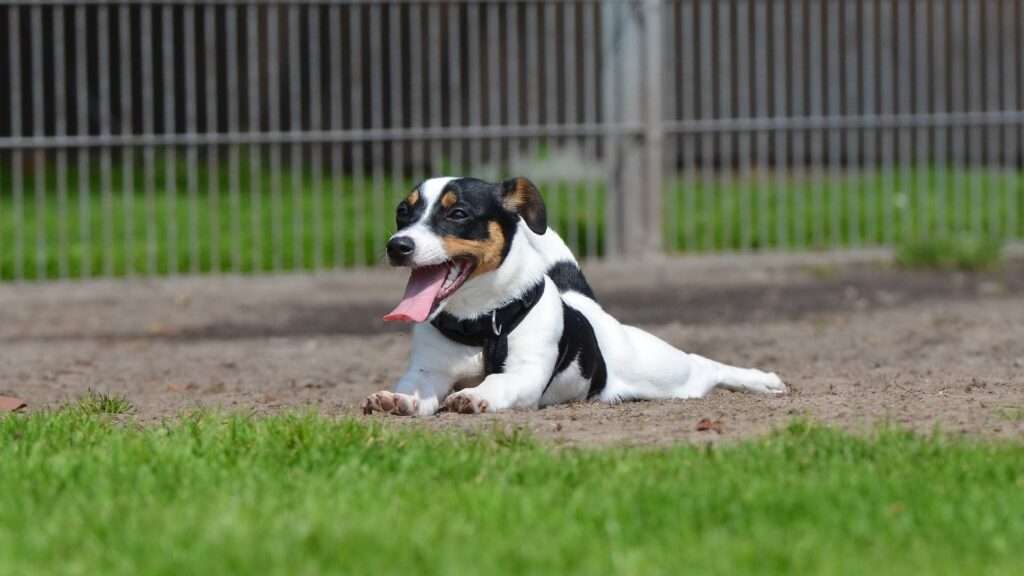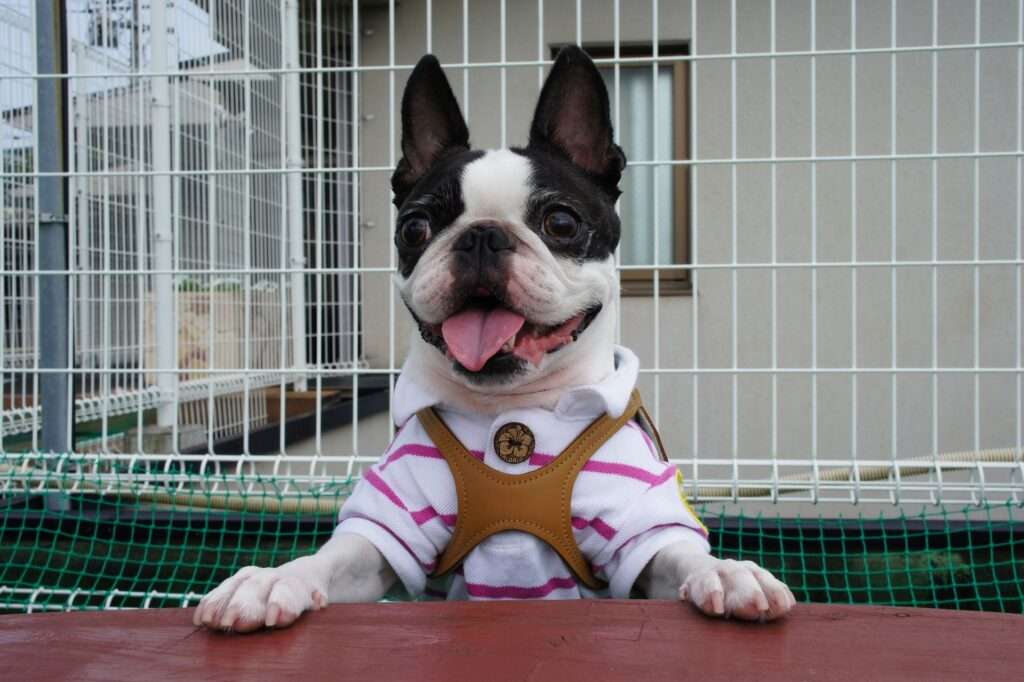What is a Dog Run? The Ultimate Guide to Benefits, Basics, and More!
As a dog owner, you know that providing your furry friend with ample exercise and outdoor time is essential to their overall health and well-being. However, sometimes taking your dog out for a walk or run just isn’t feasible due to busy schedules, unpredictable weather, or even safety concerns in your neighborhood.
That’s where a dog run comes in! In this comprehensive article, we will provide you with everything you need to know about dog runs, including their benefits, types, features, and considerations.
What is a Dog Run?

A dog run is a designated area, typically fenced off, where dogs can run and play without the risk of escaping or getting into trouble. Unlike a traditional backyard or dog park, dog runs are designed to provide a safe and secure environment for dogs to exercise and play. They come in different shapes and sizes, and some are even portable, making them ideal for use at home, while camping or traveling.
The primary purpose of a dog run is to provide dogs with an outlet for their energy while keeping them safe and contained. Dog runs can be a great option for owners who don’t have access to a large yard or who want to provide their dogs with an additional space to play and exercise.
Benefits of Dog Runs
Dog runs offer several benefits for both dogs and their owners. One of the primary benefits of a dog run is the increased physical activity it provides. Dogs need regular exercise to maintain good health and prevent obesity. A dog run provides a safe and enclosed space for dogs to run and play, which can help keep them in good physical shape.
In addition to physical activity, dog runs also offer mental health benefits for dogs. Dogs are social creatures and need opportunities to interact with other dogs and people. A dog run provides a space for dogs to socialize and play with others, which can help improve their behavior and reduce destructive behavior in the home.
Dog runs can also provide peace of mind for owners who are concerned about their dog’s safety. Dog runs are designed to be escape-proof, meaning that dogs cannot get out of them. This can be especially important for owners who live in busy or urban areas where there are many potential hazards for dogs.
Types of Dog Runs

There are several different types of dog runs, including indoor and outdoor runs, residential and commercial runs, and portable runs. Indoor runs are typically found in doggy daycare centers, while outdoor runs are more common in private homes and dog parks. Residential runs are designed for use in private homes, while commercial runs are intended for use in commercial settings, such as dog boarding facilities.
Portable runs are a newer option that has become increasingly popular in recent years. These runs are made from lightweight materials and can be easily transported and set up anywhere, making them ideal for use while camping, traveling, or visiting friends and family.
Each type of dog run has its own pros and cons, and the best type for your dog will depend on your specific needs and circumstances. When choosing a dog run, it’s essential to consider factors such as the size and breed of your dog, your budget, and the location of the run. With the right research and planning, you can find the perfect dog run to meet your dog’s needs and keep them safe and happy.
Features of Dog Runs
Dog runs come with various features that can make them more comfortable and enjoyable for your furry friend. Some of the most popular features include:
- Shade structures: Dogs can easily overheat in direct sunlight, so having a shade structure is essential for keeping them cool and comfortable.
- Water source: Providing a water source in the dog run can help keep your dog hydrated during playtime.
- Toys and obstacles: Including toys and obstacles in the dog run can provide mental stimulation for your dog and make playtime more enjoyable.
- Dog houses: A dog house can provide a safe and comfortable place for your dog to rest and relax when they’re not running and playing.
- Easy-to-clean flooring: Dog runs should be easy to clean to maintain hygiene and prevent the spread of diseases.
Considerations When Building or Buying a Dog Run
When building or buying a dog run, there are several important considerations to keep in mind to ensure that the dog run is safe and suitable for your dog’s needs. Some essential factors to consider include:
- Size: The size of the dog run should be appropriate for your dog’s size and breed. It should provide enough space for your dog to run and play comfortably.
- Location: The location of the dog run should be secure and safe. It should be away from potential hazards such as busy roads or poisonous plants.
- Materials: The materials used to build the dog run should be sturdy and durable. They should be able to withstand the wear and tear of daily use.
- Maintenance: The dog run should be easy to maintain and clean to prevent the buildup of bacteria and other harmful substances.
- Cost: The cost of the dog run is also an important consideration. You should choose a dog run that fits within your budget while still providing all the necessary features and safety measures for your dog.
A dog run can be an excellent investment for dog owners who want to provide their furry friends with a safe and secure environment for exercise and play. By considering the features and factors outlined in this article, you can choose the right dog run for your dog’s needs and enjoy all the benefits that come with it.
Maintaining Your Dog Run

To ensure that your dog run remains safe and hygienic, it’s important to maintain it regularly. Here are some tips for maintaining your dog run:
- Clean the run regularly: Regular cleaning can help prevent the buildup of bacteria and other harmful substances. Sweep up debris and wash the floors with a mild detergent regularly.
- Check for damage: Inspect the dog run for damage regularly, such as holes or cracks in the fence. Repair any damage immediately to prevent escape or injury.
- Keep the run secure: Check that the gate and fencing are secure and functioning correctly. This will help prevent your dog from escaping or unwanted animals from entering the run.
- Replace toys and obstacles: Toys and obstacles can become worn or damaged over time. Replace them regularly to ensure that they remain safe for your dog to use.
- Provide fresh water: Change the water in your dog’s bowl regularly to prevent it from becoming stagnant and unhygienic.
By following these maintenance tips, you can help ensure that your dog run remains safe and enjoyable for your furry friend.
Conclusion
In conclusion, a dog run can provide numerous benefits for both dogs and their owners. They offer a safe and secure environment for dogs to play and socialize while providing mental and physical stimulation. When building or buying a dog run, it’s essential to consider factors such as size, location, materials, and cost to ensure that it meets your dog’s needs and is safe and secure.
With the right care and maintenance, a dog run can provide years of enjoyment for your furry friend. By following the tips outlined in this article, you can create a safe and comfortable space for your dog to play and exercise while providing peace of mind for you as an owner.
Frequently Asked Questions
Q: What is the purpose of a dog run?
A: The purpose of a dog run is to provide a designated area for dogs to run and play without the risk of escaping or getting into trouble. It’s a safe and secure environment for dogs to exercise and play.
Q: How big should a dog run be?
A: The size of a dog run depends on the size and breed of your dog. Generally, a dog run should be at least 4 feet wide and 8 feet long for small dogs, and 5 feet wide and 10 feet long for larger dogs. However, it’s always best to consult with a professional or do research on the specific needs of your dog.
Q: Can a dog run be indoors?
A: Yes, a dog run can be indoors as long as it provides enough space for your dog to move around and play. Indoor dog runs are often used in apartments or homes without a backyard.
Q: Do I need a fence for a dog run?
A: Yes, a fence is necessary for a dog run to keep your dog safe and secure. The fence should be tall enough to prevent your dog from jumping over it, and sturdy enough to withstand your dog’s weight and activity level.
Q: How do I maintain a dog run?
A: Regular maintenance of a dog run is important for your dog’s health and safety. You should clean up any waste or debris daily, and disinfect the area regularly. It’s also important to check the fence and any equipment for damage or wear and tear.
Q: Can I build my own dog run?
A: Yes, you can build your own dog run with the right materials and tools. However, it’s important to do research and consult with a professional to ensure that your dog run is safe and secure.
Q: What kind of flooring should I use for my dog run?
A: The flooring of your dog run should be durable, non-slip, and easy to clean. Some popular options include concrete, gravel, or artificial turf.
Q: Can I leave my dog in a dog run all day?
A: No, you should not leave your dog in a dog run all day. Dogs need socialization and interaction with their owners, as well as opportunities for exercise and play outside of the dog run.
Q: How do I introduce my dog to a dog run?
A: It’s important to introduce your dog to a dog run gradually and with positive reinforcement. Start by allowing your dog to explore the area on a leash, and gradually increase the amount of time they spend in the dog run.
Q: Are there any safety precautions I should take when using a dog run?
A: Yes, there are several safety precautions you should take when using a dog run. These include ensuring that the fence is secure and tall enough, supervising your dog at all times, and providing shade and water to prevent heatstroke.




